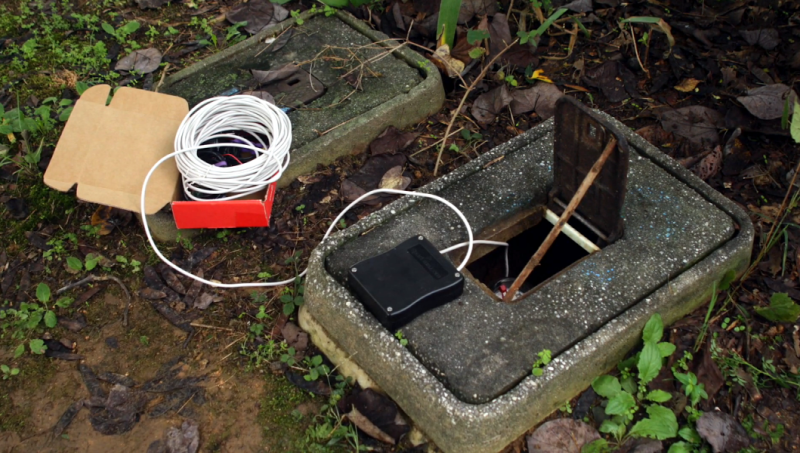It’s no secret that hackers like to measure things. Good numbers lead to good decisions, like when to kick your wastrel teenager out of a luxuriously lengthy shower. Hence the creation of this wireless Arduino-based water meter interface.
We’ll stipulate that “wireless” is a bit of a stretch. Creator [David Schneider] chose to split the system into two parts – a magnetometer and an Arduino to sense impulses from the water company meter, and a Raspberry Pi to serve the web interface. The water meter is at the street rather than in his house, so the sensor is wired to the Pi with some telephone cable. But from there the system is wireless.
[David] goes into some good detail on the sensing problem he faced, which relies on detecting the varying magnetic field due to the spinny-bits inside the flowmeter and cleaning up the signal with the Arduino; he also addresses aliasing errors that occur when flow rate approaches the sampling rate of the magnetometer.
We like the fact that there’s a lot of potential to leverage this technique to monitor other processes with rotating magnetic fields. And like this optically coupled gas-meter monitor, it’s not invasive of the utility’s equipment either, which is a plus.
[via reddit]

















Tonguetwister!
I believe a similar technique is used in the clip-on monitors Sensus makes for their water meters.
Hall sensors are cheaper and that is what i have seen on all the sensors I looked at.
arduino, raspberry-pi , 2 power supplies, a lot of cables
all this could be done with an esp8266
Go with what you know.
if you know arduino, you know esp8266, it’s just the new arduino with a wifi link embeded, only a few io less, but 160MHz and 4MB flash (http://www.cnx-software.com/2015/10/21/9-esp8266-d1-board-features-arduino-uno-headers/)
The main picture doesn’t look very “wireless” lol.
I would probably have used a lipo & charger and boost converter (aka Chinese power bank) , Arduino Nano, esp8266 and piezo element from a buzzer/speaker to detect the ticks from the meter. Just silastic it to a flat section of the case. I would probably need some sort of filter/amp for the input but an op-amp would do that fine.
And then there is this, Hackaday Prize 2014 Semifinalist, no less – https://hackaday.io/project/1460-remote-water-consumption-display
Whoops – we missed this one RaivisR! More about John’s Project can be found in this post: http://hackaday.com/2014/07/17/thp-hacker-bio-hackersbench/
“he also addresses aliasing errors that occur when flow rate approaches the sampling rate of the magnetometer.” -> “nobody in my house would be running water at or above that threshold, so I decided not to worry about this limitation”
Nice way to “address” a problem… ba dum tss!